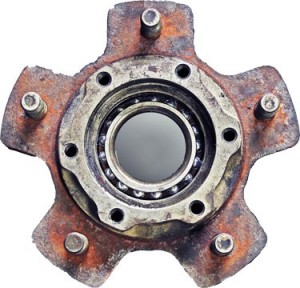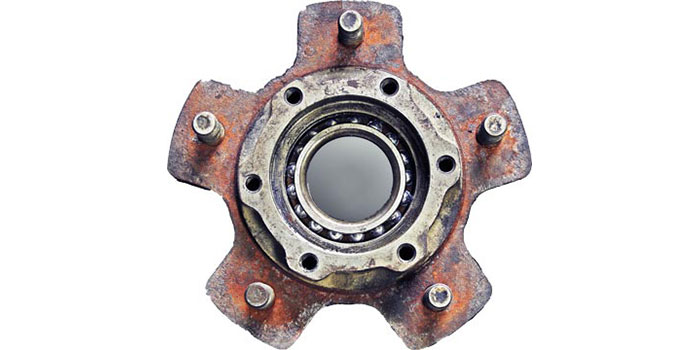 Snapping, Clicking or Popping
Snapping, Clicking or Popping
These noises are typically heard when making sharp turns and can indicate excessive bearing endplay from inadequate clamping. They can also indicate a worn or damaged outer CV-joint.
Grinding When in Motion
This noise is normally heard when turning or when there is a shift in load. This can suggest a loss of integrity, such as roller or raceway damage, but typically means mechanical damage in a wheel-end system.
Knocking or Clunking
These noises are normally heard when shifting — either when changing directions or when transitioning from accelerating to coasting. These noises can signal excessive play in the CV-joints or U-joints, or excessive backlash in the differential gears — a condition not generally associated with bearings.
Humming, Rumbling or Growling
These noises are normally associated with tire, electrical or drivetrain components. If bearing-related, the noise or vibration presents itself when driving in a straight line, but intensifies when slightly turning the steering wheel. Typically, the side opposite the rumbling is the defective side.
Wheel Vibration and/or Wobble
This associates with severe chassis misalignment or a damaged or worn tire, wheel or suspension component. When related to the hub or bearing, this can indicate a mechanically damaged bearing or improperly torqued lug nuts.
Shudder, Shimmy or Vibration at a Constant Speed
These sensations associate with worn or damaged suspension components or tires that are out-of balance or out-of-round. It is not normally indicative of hub or bearing damage.
Abnormal Side Pull When Brakes are Applied
Severe bearing looseness can cause excessive runout, making the brakes pulsate or pull. However, this usually indicates a defective caliper or equalizer and can also be a sign of worn brakes or rotors. The most common cause is a warped rotor due to the caliper not retracting.
Uneven Rotor or Brake Pad Wear
This normally indicates a bad caliper and/or a bad equalizer, which is not bearing related. The most common cause is a warped rotor due to the caliper not retracting. Severe looseness related to a worn or damaged bearing can cause excessive runout, leading to uneven wear on the brake pads and/or rotor.
Abnormal or Uneven Tire Wear
The most common causes of abnormal tire wear include worn or damaged suspension components, misalignment and improper tire inflation or selection. Extreme bearing wear or looseness can cause abnormal tire wear, but it is typically related to other failure modes.
ABS Failure
In extreme cases, too much endplay creates excessive movement that damages internal and external sensors. This indicates a lack or loss of bearing clamp, resulting from severe mechanical break up, external corrosion or damage.
Courtesy of Timken Tech Series.














